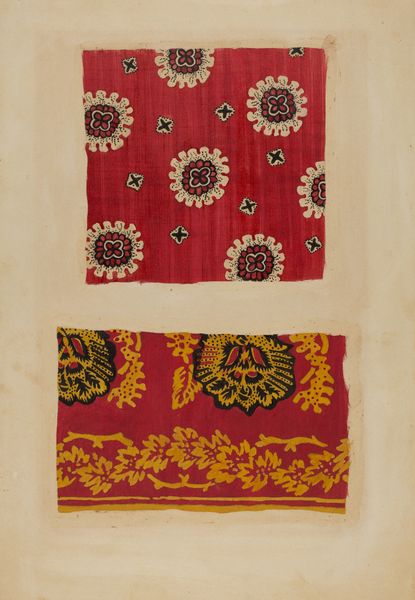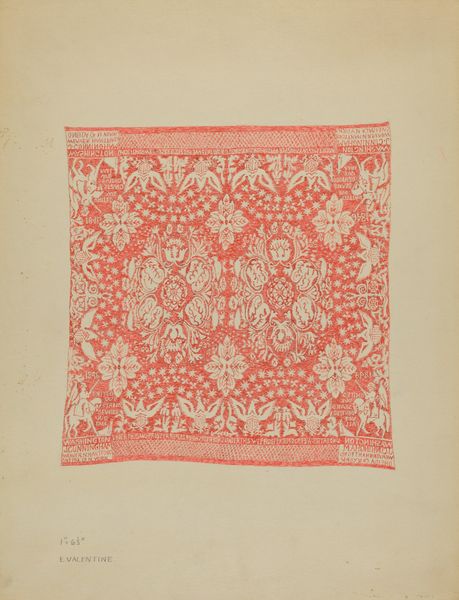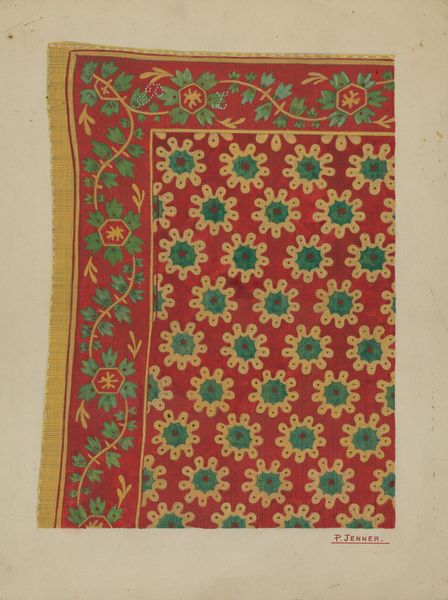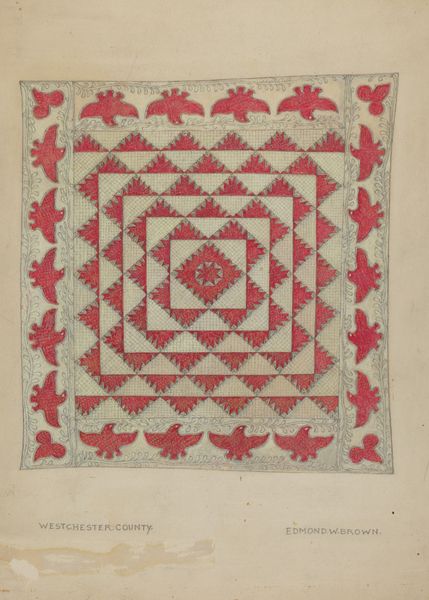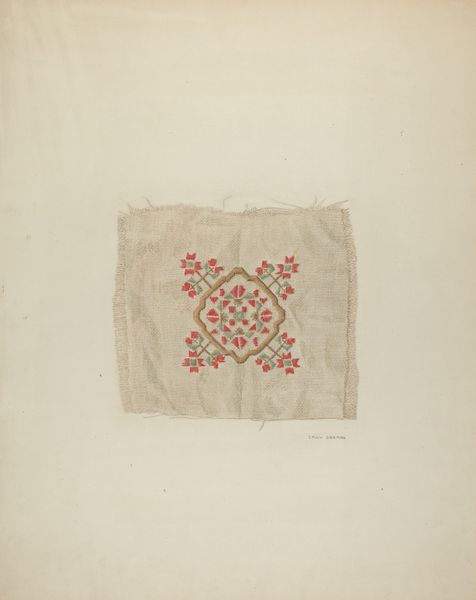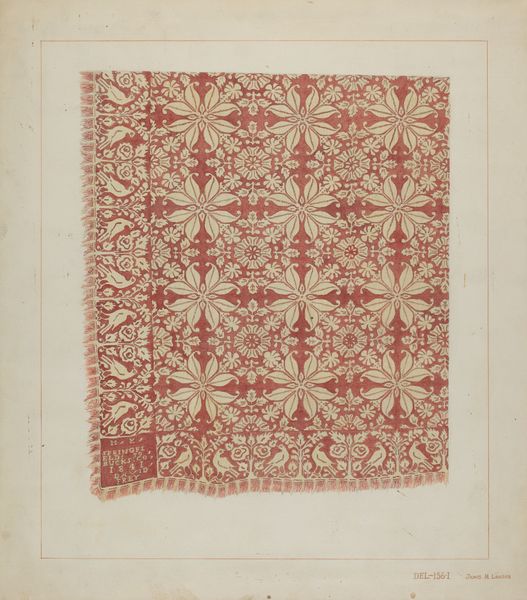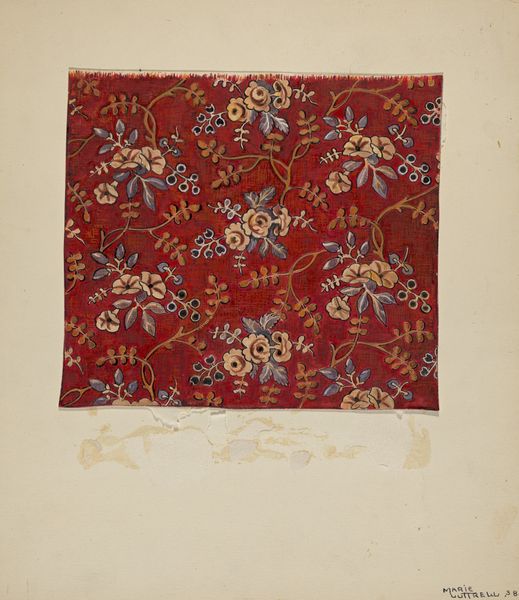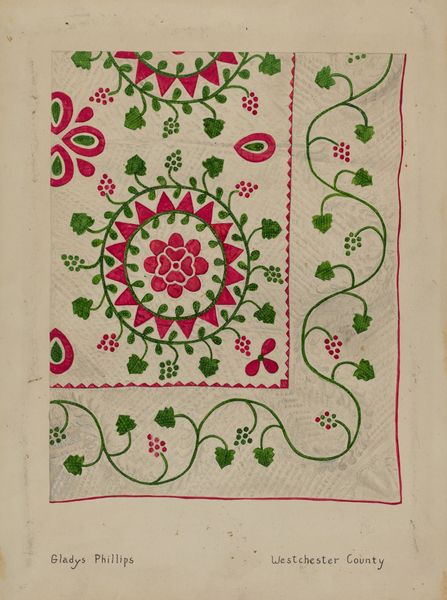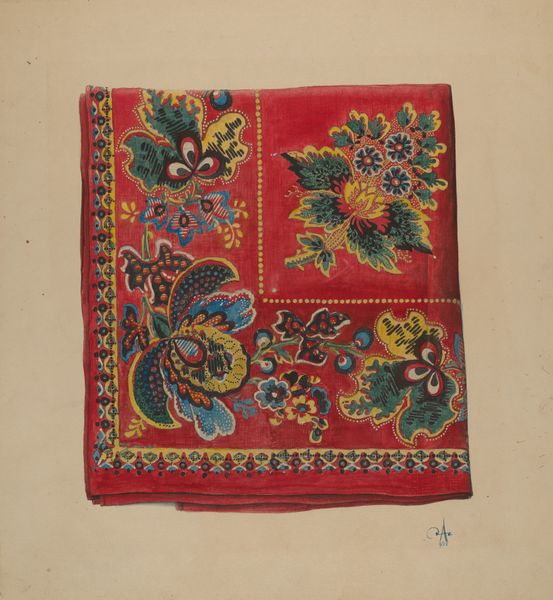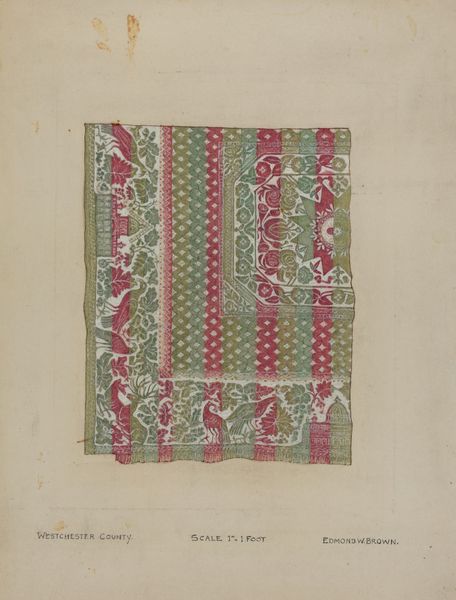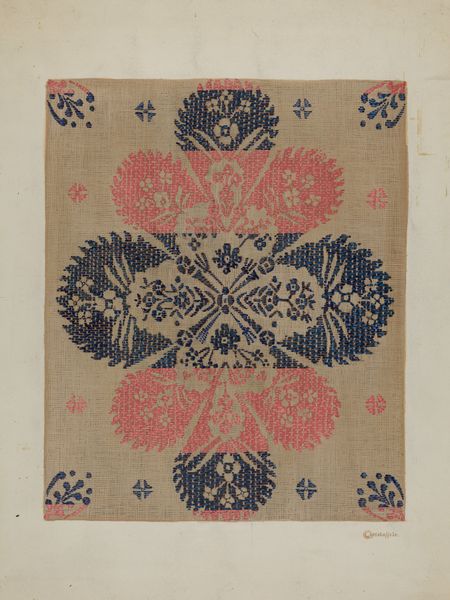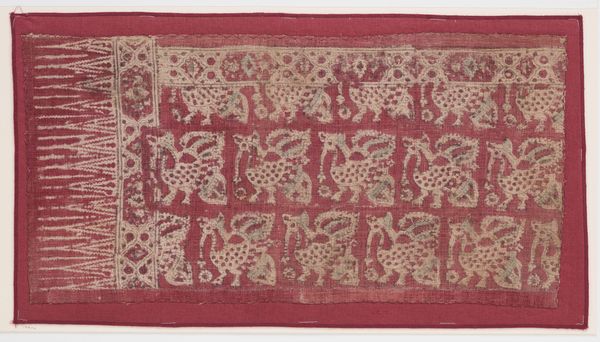
textile
#
organic
#
textile
#
decorative-art
Dimensions: overall: 36.8 x 33.3 cm (14 1/2 x 13 1/8 in.) Original IAD Object: 36" wide; 36" long
Copyright: National Gallery of Art: CC0 1.0
Editor: So this is "Printed Textile" created around 1941 by Joseph Lubrano. It appears to be mixed-media: watercolor on some sort of fabric. What strikes me is how cozy and vintage it feels—it's the kind of print you might find on an old quilt or scarf. How would you interpret this work? Art Historian: What a wonderful observation. Instantly, the paisley motif comes to mind, with its deep cultural roots. But Lubrano’s choice to depict it almost as a 'negative space,' an absence outlined by flora, evokes a deeper historical memory. Think about textiles—what do they represent, psychologically? Editor: Hmmm…Comfort? Protection? Decoration, certainly? Art Historian: Precisely. This isn't simply about aesthetics; the floral designs act as ciphers. Consider, during the war years of the 1940s, when this was created, the 'make do and mend' mentality encouraged reuse and creativity amidst austerity. Perhaps the artist alludes to the enduring strength and continuity of beauty amidst hardship, like folk patterns stitched through generations? How do the colors strike you? Editor: The magenta is definitely striking! And I appreciate how it is faded in areas…It definitely calls back to organic color palettes from impressionistic works that embraced decorative beauty. Art Historian: Absolutely. The somewhat faded palette evokes nostalgia. It hints at something precious, aged. Now, do you think Lubrano wanted to just make something decorative, or could there be other, deeper symbols hiding in plain sight? Perhaps think about art of that era…. Editor: I hadn't thought about it that way… I was so focused on its apparent "cosiness"! It’s amazing how understanding the historical context and the symbolism of everyday objects can completely change your interpretation of a piece. Art Historian: Exactly! Visual symbols connect us through time, to traditions, emotions, and memories—always giving artwork more and more possibilities of cultural identity, social reflection, or even the simplest visual poetry.
Comments
No comments
Be the first to comment and join the conversation on the ultimate creative platform.
